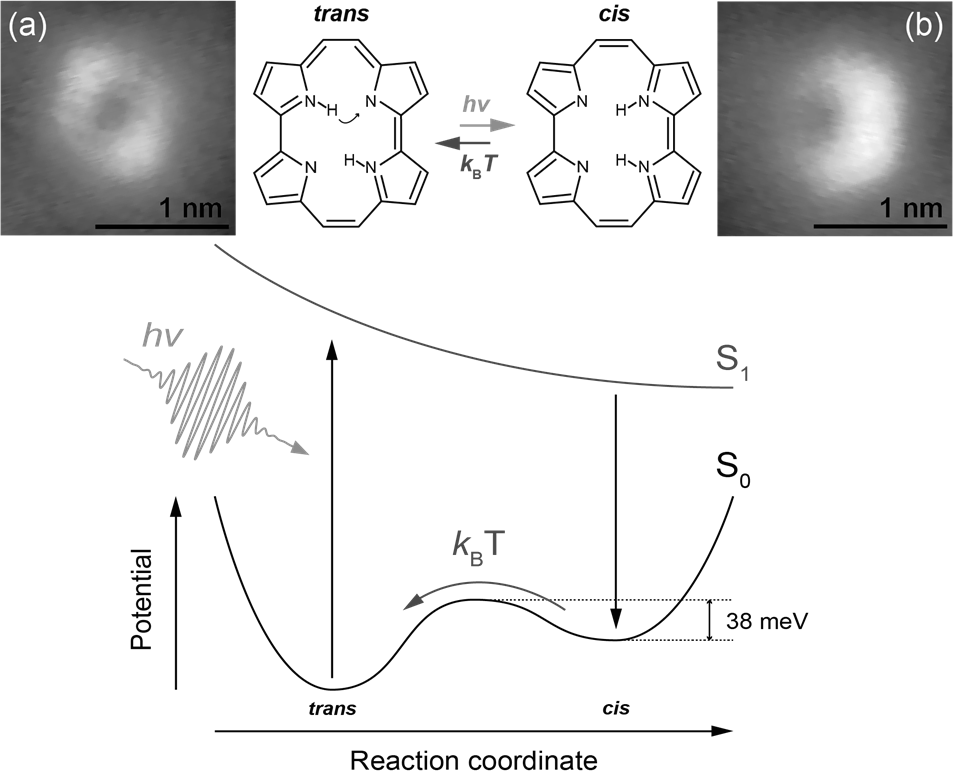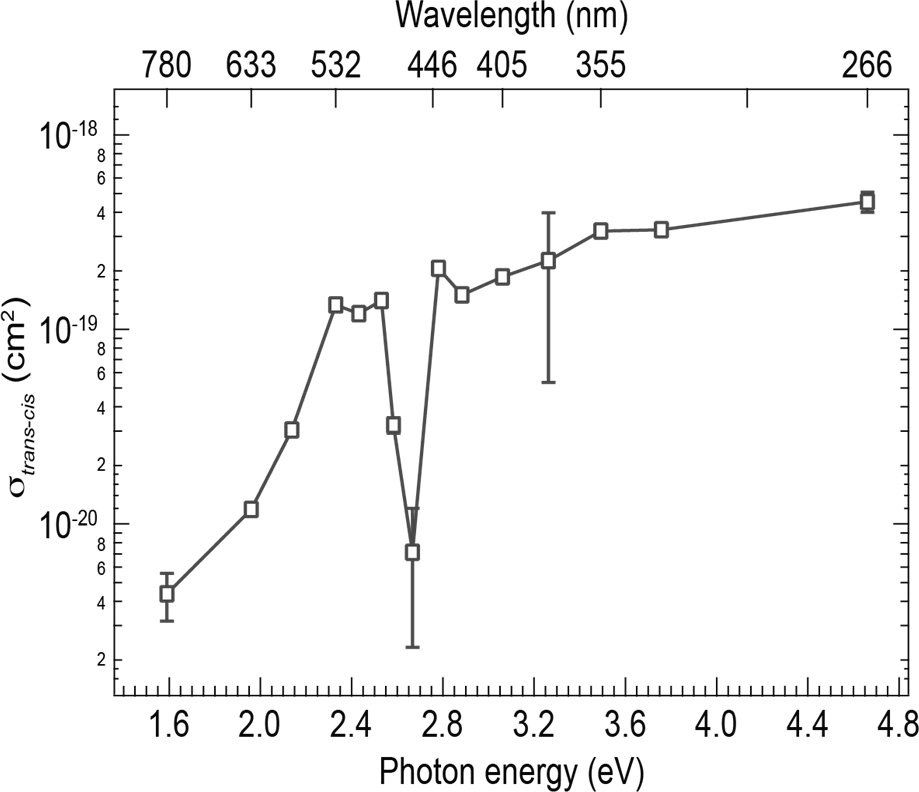
Figure 1: Schematic of photoinduced trans to cis transition of a porphycene molecule on Cu(111).

Figure 2: Wavelength dependence of the tautomerization cross-section of a porphycene molecule on Cu(111).
Poster
Direct observation of photoinduced intramolecular H-atom transfer within a single porphycene molecule on a Cu(111) surface
1Department of Physical Chemistry, Fritz-Haber Institute of the Max-Planck Society, Faradayweg 4-6, 14195 Berlin, Germany
2Institute of Physical Chemistry, Polish Academy of Sciences, Kasprzaka 44/52, Warsaw 01-224, Poland
3Department of Physical Chemistry, University of Graz, Heinrichstrasse 28, 8010 Graz, Austria
Photoinduced H-atom (proton) transfer is of vital importance in several chemical reactions and elementary steps of biological processes [1]. Microscopic understanding of its dynamics will contribute to a precise control of the related processes and functions. In order to examine the fundamental mechanism, the intramolecular H-atom transfer reaction (tautomerization) is one of the interesting model systems. More recently, also tautomerization has gained considerable attention in nanoscale science and technology, because it represents one of the most promising mechanisms for molecular switches, which are an essential component of molecular scale devices.
Here we report the direct observation of photoinduced tautomerization within a single porphycene molecule on a Cu(111) surface using a combination of low-temperature scanning tunneling microscopy and laser excitation, ranging from the UV to the NIR spectral region. Porphycene molecules adsorb on the surface as monomers (without aggregating to clusters at low coverage), and the trans tautomer is observed as the thermodynamically stable state (Fig. 1a). However, laser irradiation can convert the trans tautomer to the metastable cis state unidirectionally (Fig. 1b), while heating the substrate transitions the molecule back to the trans tautomer. We quantified the tautomerization cross-section to be ~10-19 cm2. Furthermore, the wavelength dependence reveals a clear resonance feature in the visible regime as well as a linear increase in cross-section in the UV (Fig. 2). We will discuss the excitation mechanism regarding different contributions; one of which is the direct molecular absorption while the other is a hot-electron (generated in the surface) mediated process. Our approach provides a novel insight into photoinduced adsorbate reactions at the single molecule level.

Figure 1: Schematic of photoinduced trans to cis transition of a porphycene molecule on Cu(111).

Figure 2: Wavelength dependence of the tautomerization cross-section of a porphycene molecule on Cu(111).
[1] J. T. Hynes et al., Hydrogen-Transfer Reactions (Wiley-VCH, Weinheim, 2007)